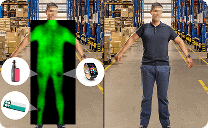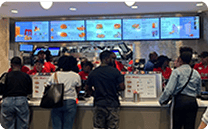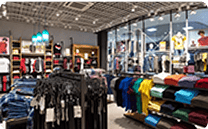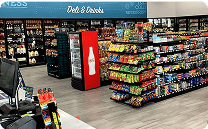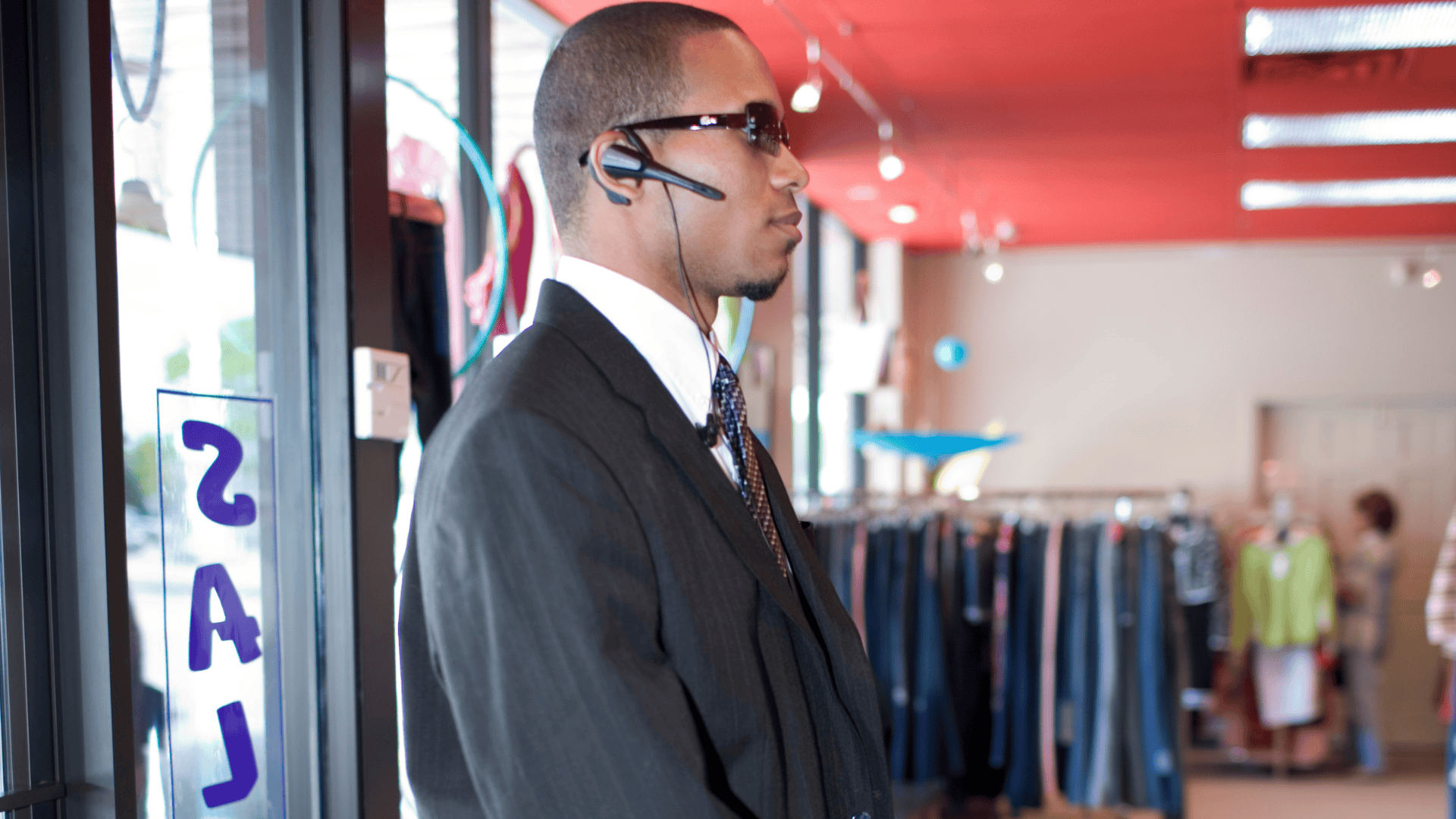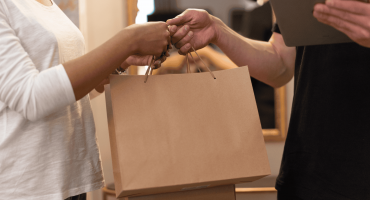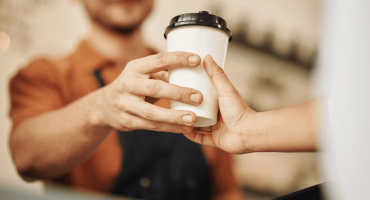In This article
Whether you operate a boutique or a big-box chain store, customer safety in retail stores is critical to your customer experience management and optimization efforts. A well-implemented safety strategy promotes customer trust and comfort, protects your brand reputation, and reduces liability risks. This article outlines some top strategies for keeping your customers safe, comfortable, and confident throughout their shopping experiences with you, from your walkways to your parking.
Checklist for Enhancing Customer Safety in Retail Stores
Store Layout and Maintenance
Clear Walkways
A cluttered aisle isn’t just unsightly—it’s potentially dangerous. Tripping hazards are a leading cause of customer injuries, which can lead to costly lawsuits. Regularly inspect store aisles to ensure they are free from obstacles such as boxes, cleaning carts, promotional displays, or misplaced merchandise.
Pro Tips:
- Conduct or mandate hourly floor walks.
- Use clear signage to alert customers of temporary obstacles.
- Implement and enforce a policy for immediate clean-up and inventory restocking after peak hours.
Adequate Lighting
Proper lighting improves ambiance, highlights specials and promotions, and enhances safety. Poorly lit areas increase the risk of slips, trips, and falls, especially in entrances, fitting rooms, and stairwells.
Pro Tips:
- Use LED lighting for consistent brightness and energy efficiency.
- Ensure emergency lighting is tested at least monthly.
- Install motion-activated lighting in low-traffic areas to deliver illumination when needed while conserving energy.
Floor Safety
In retail, safety starts from the ground up – or more specifically, from the floor of your store. Wet or uneven floors can turn a pleasant shopping experience into a dangerous one. Clean, dry, and level walking surfaces must be elements of your safety strategy.
Pro Tips:
- Ensure all spills are addressed immediately using proper absorbents or mop-up kits, which should be readily available to all staff.
- Place slip-resistant, spill-absorbing mats at entrances and high-spill areas such as food courts.
- Use clear floor signage to indicate cleaning in progress or slippery surfaces, in multiple languages where appropriate.
Emergency Preparedness
Fire Safety
According to the National Fire Protection Association (NFPA), fires in U.S. retail properties cause an average of over $50 million in direct property damage annually and pose significant risks to your customers and staff. Retail fire safety must be a fundamental component of any comprehensive safety program.
Best Practices:
- Install and routinely test smoke detectors, fire alarms, and sprinkler systems.
- Ensure emergency exits are marked with clear, easily understood signs that are always illuminated and unobstructed.
- Provide accessible fire extinguishers at multiple, easily accessible points and train staff in their use.
- Keep your fire safety measures current and fully compliant with all relevant codes and regulations.
Emergency Preparedness
For your customer safety and emergency preparedness efforts to be effective, they must include processes and tools for regularly checking alarms, backup power systems, exits, and other key components of those efforts. Use tech solutions such as smart sensors or app-based monitoring tools to ensure your safety systems are operational.
Pro Tips:
- Implement weekly visual checks of emergency equipment.
- Digitally log safety checks using inspection software, and ensure those logs are regularly reviewed.
- Equip your emergency exits with alarms, tamper-proof covers, or other protections to discourage misuse without blocking access.
Employee Training and Safety
Comprehensive Training
Your employees are your customers’ first line of protection. From recognizing risks to responding in emergencies, your staff must be trained to act swiftly with care, competence, and confidence.
Training Should Include:
- Emergency evacuation procedures.
- Tools and processes for identifying and reporting hazards.
- Customer calming, de-escalation, and first aid basics.
Pro Tip: Use a learning management system (LMS) to provide continuing safety education and track staff certifications.
Personal Protective Equipment (PPE)
PPE is essential if your retail environment involves chemicals, food, or other potentially high-risk merchandise. Even in lower-risk environments, gloves and face coverings can provide heightened hygiene and customer assurance.
Practical PPE Examples:
- Gloves for cashiers handling large volumes of cash.
- Non-slip shoes for floor staff in grocery or kitchen areas.
- Masks or shields during outbreaks of communicable diseases.
Regular Safety Audits
Audits can help you identify and address hazards before they become serious problems and verify that safety protocols are followed. Audits also promote a culture of continuous improvement and accountability.
Audit Essentials:
- Conduct both announced and surprise audits.
- Use checklists based on guidelines from the U.S. Occupational Safety and Health Administration (OSHA) and all relevant local regulations.
- Engage reputable third-party safety consultants annually for unbiased insights.
Security Measures
Surveillance Systems
Strategic placement of closed-circuit television (CCTV) cameras deters theft, helps monitor customer behavior, and provides critical evidence if an incident occurs.
Best Practices:
- Cover all entry and exit points, blind spots, and checkout areas.
- Use AI-enabled cameras for facial recognition and heat mapping.
- Clearly display signage that informs and reassures customers about your video surveillance.
Payment Handling Protocols
Financial safety is part of customer safety. Whether customers prefer cash, checks, or electronic payment options, poor management of cash or customer payment information can lead to theft, fraud, or violent robbery, endangering your staff, shoppers, and reputation.
Pro Tips:
- Limit cash in registers and use drop safes.
- Establish strict cash handling policies.
- Schedule random audits of cash drawers.
- Make sure staff understand how and why keeping customers’ personal and payment information secure is critical to customer safety and satisfaction.
Parking Lot and Exterior Safety
Maintenance
Customers’ first and last impressions of your store are often formed in your parking lot. Uneven pavement, poor signage, and debris can lead to accidents, lost sales, and lawsuits.
Best Practices:
- Repair potholes as quickly as possible and repaint parking lines regularly.
- Clear snow, ice, or leaves promptly.
- Designate pedestrian-only areas with bollards or fencing and clear signage.
Lighting
Security experts agree that well-lit parking areas reduce crime and accidents. Poor lighting increases risk after dark and reduces visibility during inclement weather.
Pro Tips:
- Install motion-activated lights in low-traffic areas.
- Use pole lighting in larger lots and check regularly for outages.
- Partner with local police for routine safety patrols.
Conclusion
Enhancing customer safety in retail stores is not just about complying with regulations. It’s about building trust, preventing injury, and creating a space where customers feel confident and welcome. Success in this critical area requires a proactive, comprehensive approach that addresses everything from fire alarms to fall prevention.
When you invest in layout improvements, emergency preparedness, employee training, and secure environments inside and out, you aren’t just protecting your bottom line. You’re protecting your customers in ways that can build customer loyalty and community goodwill.
No retail environment is entirely risk-free. But the right policies, processes, and tools can help you significantly reduce the likelihood of incidents and provide your customers with more secure, comfortable, and enjoyable shopping experiences. From clean aisles and fire safety systems to vigilant, well-trained staff and secure parking lots, the tips in this checklist can help you build a safer retail space, one step at a time. For more information, visit our website.
Frequently Asked Questions: Customer Safety in Retail Stores
Why is customer safety in retail stores Important?
Customer safety in retail stores affects customer comfort and loyalty, your exposure to liability, and your brand reputation. A single accident can result in legal action and significant, perhaps permanent damage to your image.
What is the most common retail store safety hazard?
According to retail insurance claims, trips and falls due to cluttered aisles or wet floors are among the most reported customer injuries.
How often should safety audits be conducted?
Retailers should perform internal safety audits monthly and bring in third-party experts at least annually for comprehensive reviews.
What are the key elements of retail fire safety?
Retail fire safety includes functional fire alarms, extinguishers, sprinkler systems, clear exits, and staff training in emergency evacuation protocols and customer calming.
Are parking lot accidents the retailer’s responsibility?
Yes, in many jurisdictions, retailers can be held liable for injuries that occur in poorly maintained or unsafe parking lots adjacent to their premises.
